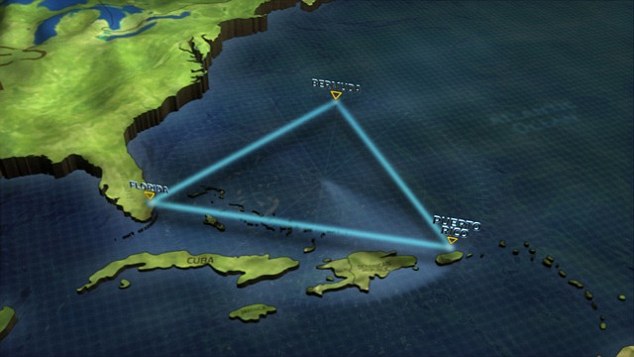For centuries, the Bermuda Triangle — the mysterious region between Miami, Bermuda, and Puerto Rico — has captured global fascination. Countless tales of vanished ships and lost aircraft have fueled theories ranging from alien abductions to time warps. But now, a new scientific explanation may finally shed light on one of the ocean’s greatest enigmas.
The Science Behind the Mystery

Recent research led by oceanographers and climate scientists points to a powerful natural phenomenon as the likely culprit: rogue waves. These massive walls of water, rising unexpectedly from calm seas, can reach heights of over 30 meters (100 feet) — tall enough to engulf even large ships within seconds.
According to simulations conducted at the University of Southampton, the unique combination of strong Atlantic currents, variable weather systems, and shifting ocean topography in the Bermuda region creates a perfect breeding ground for these waves. When multiple wave systems converge, their energies combine, producing a towering force of nature that few vessels can survive.
From Myth to Meteorology

While folklore once blamed the disappearances on supernatural forces, magnetic anomalies, or extraterrestrial activity, scientists now believe that extreme weather events — such as hurricanes, methane gas eruptions, and rogue waves — offer more grounded explanations.
“These waters are some of the most turbulent on Earth,” said one ocean dynamics researcher. “What seems like a sudden vanishing is often the result of a chain reaction between wind, current, and wave energy.”
The unpredictable weather patterns of the western Atlantic also mean that storms can form rapidly, leaving crews little time to react. Combined with the Triangle’s heavy air traffic and maritime routes, the region’s reputation for mystery is partly born from its sheer volume of travel.
The Power of Rogue Waves
First confirmed by satellite and buoy data in the 1990s, rogue waves were once considered maritime myths. They form when smaller waves merge into a single massive wall of water — a phenomenon scientists call constructive interference.
Unlike tsunamis, which are triggered by underwater earthquakes, rogue waves can emerge in open sea without warning. They strike suddenly, destroy anything in their path, and disappear just as quickly — leaving little evidence behind.
In controlled testing environments, computer models replicating Bermuda’s ocean conditions have produced wave patterns identical to those suspected of swallowing vessels whole. These findings suggest that nature, not mystery, is the true architect of the Triangle’s deadly reputation.
A Legend That Endures
Despite scientific progress, the Bermuda Triangle’s legend continues to thrive. Its combination of geography, weather, and human imagination makes it one of the world’s most enduring mysteries. The stories of vanished ships — from the USS Cyclops in 1918 to Flight 19 in 1945 — remain deeply embedded in popular culture.
But experts now urge the public to view the Triangle not as a supernatural portal, but as a powerful natural environment demanding respect. The same waters that inspired centuries of myth also serve as a vital trade corridor, navigated safely every day by thousands of ships and aircraft.
The Truth Beneath the Waves
Far from the realm of fantasy, the Bermuda Triangle stands as a reminder of the ocean’s raw unpredictability. Nature itself, not otherworldly forces, may be responsible for its darkest tales. And while science may never completely silence the myths, it offers something equally captivating — the awe-inspiring truth of a sea still capable of surprise.
